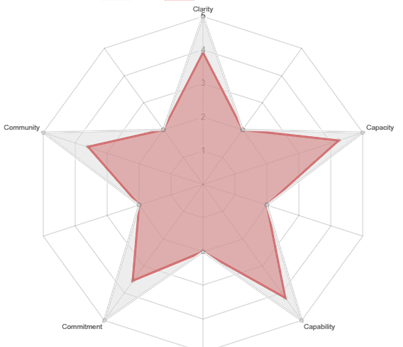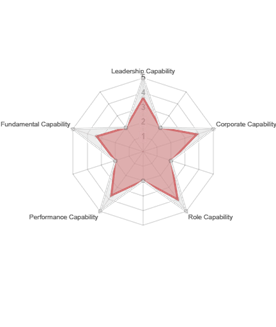How To Mint And Maintain A Future-Proof Currency
Two rich phrases (coined by Dr. Tasha Eurich), namely "loving critics" and "see clearly and act decisively," are key to minting and maintaining a future-proof currency that can deliver sustainable success, if you know how. Leaders will also need to know how to display humility and demonstrate trust.
It is important to establish context for the above-mentioned two phrases upfront. Dr. Tasha Eurich (an organizational psychologist, author, and sought-after keynote speaker) works with senior executives to help them "see clearly and act decisively." It is her experience that people generally act decisively without seeing clearly. In fact, whereas 95% of people believe that they are self-aware, in reality only 10-15% are. She finds that while leaders spend much time talking about how to get feedback, they don't spend enough time on the issue of who they should get feedback from. She goes on to suggest that the best people to get feedback from are "loving critics." Loving critics are described by her as people who fit two important criteria: a) they want you to be successful, and b) they are willing to tell you the truth, even when it is difficult or even possibly because it is difficult.
Given the above context, it will be put forward that there are 4 key ingredients to minting and maintaining a future-proof organizational currency capable of delivering sustainable success. These are:
- The implementation of a holistic, inclusive model that positions organization development and employee development as the inextricable flip sides of the same coin to inform the minting of a future-proof currency for success that is unique to each organization.
- A robust, structured, and easy-to-use process to gather holistic feedback and then present it in a clear and easy-to-understand way, from both an organization development and an employee capability development perspective.
- Leaders who are prepared to empower their people to be "loving critics" through their ability to display humility and demonstrate trust.
- Leaders who "see clearly and act decisively.
4 Ingredients To Mint And Maintain A Future-Proof Organizational Currency
A high-level discussion of these 4 ingredients follows:
1. A Holistic, Inclusive Model That Positions OD And ED As Flip Sides Of The Same Coin
Organization development and employee development are depicted diagrammatically below as flip sides of a coin that metaphorically represent the value of any organization's currency for sustainable success. For the purposes of this article, our models and methodologies are used. However, any equally holistic and robust approach could be appropriate. The OD and ED models illustrated below are easy to understand and combine to create a framework to systematically mint a rich future-proof currency that is unique to each organization and to maintain its currency.

The organization development model (on the left above) is explained more fully in a previous article, while the employee development model (on the right above) is more fully explained in the following previous article.
2. A Structured, Holistic, Inclusive Feedback Methodology That Is Easy To Use And Easy To Understand
The models shown above are holistic and inclusive of all best practice as it relates to both organization development and employee development. It is, therefore, reasonable to expect that most organizations will have implemented interventions aimed at developing many or most, if not all, of the key dimensions that make up each of the models. And, it is reasonable to expect that their efforts will not have gone unrewarded. So, a good place to start is with diagnostic surveys to measure how future-proof their organizational and people currency is in terms of achieving sustainable success.
A robust, structured, easy-to-use process to gather holistic feedback and then present it in a clear and easy-to-understand way, from both an organization development and an employee capability development perspective, is described in the above-mentioned two articles.
Figure 1 below demonstrates how results can be shown from a total organizational perspective and Figure 2 shows how an employee capability profile might be presented. Importantly, the OD results can be presented separately for the various teams and departments. Whilst individual capability profiles may be shown from an individual self-assessment and compared to 360-degree feedback from colleagues, they may also be aggregated to show what the capability profile of a team, a department, or an entire organization might look like. Both OD and ED results can be interrogated to provide specific insights.
 Figure 1
Figure 1
 Figure 2
Figure 2
Having a sustainable, healthy, high-performance organization that can swiftly and confidently adjust to future demands requires both of these organizational stars to shine brightly and be in sync. The above presentation of the two stars, with the organizational star being "larger" than the cumulative employee capability star, is symbolic of "the whole being greater than the sum of its parts." The relevance and importance of this become evident as one works through this kind of process systematically.
3. Loving Critics
It stands to reason that if you really want to know what is going on in an organization, the best people to ask are the people that work there. So, we need each and every person to become a "loving critic" of the organization for the people they work most closely with and of themselves. And, to do this, we require the leaders to have the following:
- The humility to ask the right questions of the right people and to really listen
- The trust that "the messengers will be listened to (not shot)" and that their feedback will be respected, appreciated, and acted upon
- A way to help them gain meaningful, holistic, structured, and honest feedback (covered in the section above, but reiterated in this section for completeness)
Humility is a key leadership pro-self capability (pro-self and pro-social capabilities together make up the critical fundamental capability set). Trust is a key construct of the organizational development dimension of commitment. There is much literature on the importance, relevance, and development of both of these criteria and further discussion is not within the scope of this article.
4. Leaders Who "See Clearly And Act Decisively"
Leaders are human. Sometimes they don't see clearly and other times they may not act decisively.
How can it be explained that huge, immensely successful organizations suddenly "fall to their knees," seemingly without much prior warning? Steinhoff is a recent example and Christo Wiese is an astute and seasoned businessman. Is it possible that he "could not have seen it coming"? Is it more likely that the apparent staggering success of the organization blinded him to warning signs? What if he had had the humility to ask the right people who worked there the right questions, to genuinely listen and ask questions only to achieve clarity, and then to have acted decisively a long time before disaster struck?
In working with organizations using the process and methodology described above, it is apparent that "seeing clearly and acting decisively" are key attributes for successful leadership. In one organization, a serious issue was highlighted to leadership, but not acted on. A subsequent event, relating to this issue, caused the organization significant damage. In another organization, leadership was committing effort, resources, and finances to act decisively to resolve a problem, but with little success. However, when the diagnostics revealed the real issue clearly, leadership was able to act decisively with confidence to resolve the problem.
Leaders are human and they require the support they deserve to "see clearly and act decisively."
The Might Of Insight
Insight only has might if it is used, not put on the back burner as a "might do for the future." It is hoped that this article might stimulate some dialogue that helps many organizations mint a future-proof currency for sustainable success.









